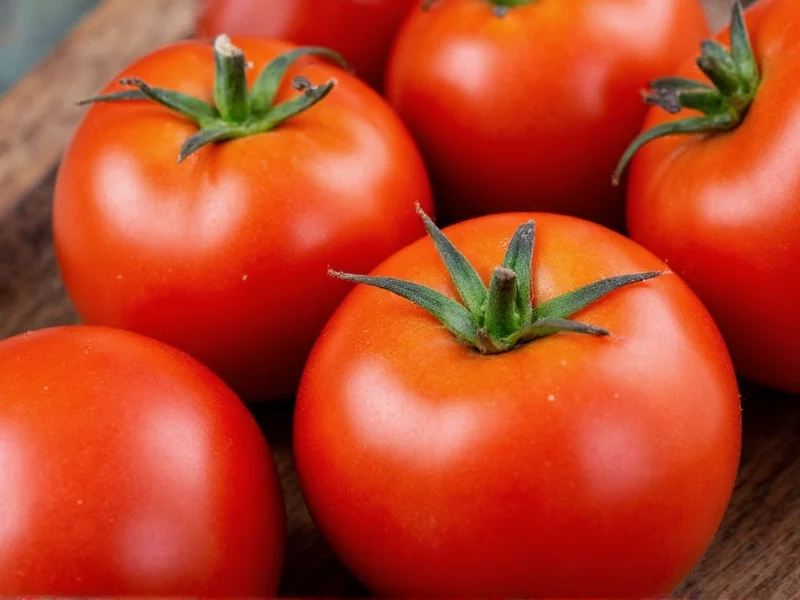Choosing the right tomatoes transforms ordinary tomato soup into a restaurant-quality dish. Many home cooks make the mistake of using watery, underripe varieties that dilute flavor and require excessive reduction time. The perfect tomato for soup balances acidity, sweetness, and flesh density to create a naturally creamy texture without relying heavily on cream or thickeners.
Why Tomato Selection Matters for Soup Quality
The variety of tomato you select directly impacts your soup's flavor concentration, texture, and cooking time. Tomatoes with high water content (like standard grocery store round tomatoes) require extended simmering to reduce liquid, which can dull fresh flavors. Ideal soup tomatoes have dense flesh that breaks down smoothly while maintaining vibrant acidity that balances richness.
Key Characteristics of Soup-Perfect Tomatoes
Understanding these four factors helps identify the best tomatoes for tomato soup:
- Flesh-to-liquid ratio - Higher flesh content means less water to reduce
- Acidity balance - Proper acidity brightens flavors without overwhelming
- Seed density - Fewer seeds create smoother texture with less straining
- Natural sweetness - Reduces need for added sugar to balance acidity
| Tomato Variety | Flesh Density | Acidity Level | Best For |
|---|---|---|---|
| Roma/Plum | ★★★★★ | Moderate | Classic tomato soup, concentrated flavor |
| San Marzano | ★★★★☆ | Low-Moderate | Creamy soups, balanced sweetness |
| Vine-Ripened | ★★★☆☆ | High | Summer soups with fresh herbs |
| Cherry | ★★☆☆☆ | High | Specialty soups with roasted depth |
Top Tomato Varieties for Exceptional Tomato Soup
Roma (Plum) Tomatoes: The Soup Standard
Roma tomatoes remain the professional chef's top choice for tomato soup preparation. Their oblong shape, thick walls, and minimal seed cavities deliver maximum flesh with minimal liquid. When cooked down, Romas create an intensely flavorful base that requires less reduction time than juicier varieties. Their moderate acidity provides the bright note essential to balanced tomato soup without requiring excessive sugar adjustment.
San Marzano Tomatoes: The Premium Choice
Genuine San Marzano tomatoes (look for DOP certification) grown in Italy's Sarno River valley offer superior sweetness with lower acidity than standard Romas. Their elongated shape and fewer seeds create exceptionally smooth purees ideal for velvety tomato soup. While fresh San Marzanos are seasonal, high-quality canned versions provide consistent results year-round. Avoid imposters labeled "San Marzano style" which lack the distinctive flavor profile.
Heirloom Options for Seasonal Soup Making
During peak tomato season, certain heirloom varieties can produce remarkable soup. Brandywine tomatoes offer complex sweetness but require careful balancing of their higher acidity. Amish Paste tomatoes provide Roma-like density with deeper flavor complexity. When using heirlooms, combine with lower-acid varieties to maintain proper flavor balance in your soup.
Seasonal Strategies for Perfect Tomato Soup
Understanding tomato availability helps you make the best choices throughout the year:
- Summer (peak season): Fresh Romas and San Marzanos deliver maximum flavor. Choose fully ripe but firm tomatoes with deep color.
- Fall through Spring: High-quality canned whole peeled tomatoes outperform off-season fresh tomatoes. Look for brands packed in tomato juice rather than puree.
- Cold months: Fire-roasted canned tomatoes add depth to winter soups when fresh options lack flavor.
Pro Tips for Using Tomatoes in Soup
Maximize your tomato investment with these professional techniques:
- Peel strategically: Blanch fresh tomatoes in boiling water for 30 seconds, then transfer to ice water. Skins will slip off easily, creating smoother soup.
- Seed selectively: For ultra-smooth soup, remove seeds and gel, but retain some for flavor complexity.
- Acidity balancing: Add a pinch of baking soda only if necessary to reduce excessive acidity - start with 1/8 teaspoon per pound of tomatoes.
- Flavor layering: Sauté aromatics first, then add tomatoes and simmer gently to preserve fresh flavor.
Common Tomato Soup Questions Answered
Many home cooks wonder whether they can mix tomato varieties for soup. Combining 70% Romas with 30% sweeter varieties like Golden Jubilee creates nuanced flavor while maintaining proper texture. When using less-than-ideal tomatoes, add tomato paste (1-2 tablespoons per pound of tomatoes) to boost flavor concentration without increasing liquid content. Remember that fully ripe tomatoes always outperform underripe ones for soup, as ripeness develops sugars that balance natural acidity.
Frequently Asked Questions
Can I use regular grocery store tomatoes for tomato soup?
Standard round tomatoes contain more water and less flesh, requiring extended reduction that can dull fresh flavors. If using them, add 2-3 tablespoons of tomato paste per pound to concentrate flavor and compensate for higher water content.
What's the difference between San Marzano and regular plum tomatoes?
Authentic San Marzanos (DOP certified) have a sweeter, more complex flavor with lower acidity and thicker flesh than standard plum tomatoes. They contain fewer seeds and produce a naturally smoother puree ideal for silky tomato soup.
When should I use canned versus fresh tomatoes for soup?
Use fresh tomatoes only during peak summer season when they're fully vine-ripened. For all other times, high-quality canned whole peeled tomatoes provide superior, consistent flavor. Canned tomatoes are processed at their peak, preserving flavor that off-season fresh tomatoes lack.
How do I fix tomato soup that's too acidic?
First, try balancing with natural sweetness from caramelized onions or a small amount of carrot. If still too acidic, add 1/8 teaspoon baking soda at a time while tasting. Avoid excessive sugar which can create one-dimensional flavor.











 浙公网安备
33010002000092号
浙公网安备
33010002000092号 浙B2-20120091-4
浙B2-20120091-4